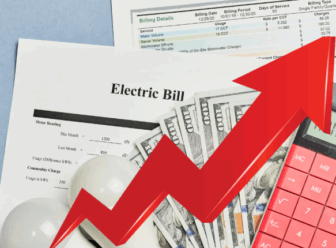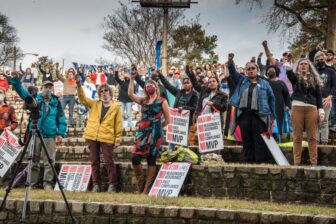Today, the Washington Post broke news of an announcement by Secretary of Energy Steven Chu that the United States was contributing $85 million to The Climate Renewables and Efficiency Deployment Initiative.
“The initiative — which includes $85 million from the United States and donations from industrialized nations such as Italy and Australia — aims to make energy-saving technology that already exists cheap enough to penetrate markets in India, parts of Africa and elsewhere. It is distinct from the major financing package the United States is expected to unveil this week as part of a broader climate deal.”
While it’s good to see initiatives such as these, the total amount and the contribution by the US fall of what international talks in Copenhagen need in order for a successful agreement. The broader deal the US is expected to unveil later this week will lay out around $1.2 billion in its 2010 budget for international climate aid and mitigation, and Senator John Kerry recently wrote a letter to Secretary of State Hilary Clinton pushing for $3 billion to be included in the 2011. Both figures depend on the Senate passing climate legislation. At the same time, the EU is trying to scrape together $10 billion in funding from the 2010-2012 period, although there is concern right now over whether it’s new money, or international assistance dollars being redirected.
Contrast this with the recommendation from the World Bank:
“Estimates of how much money developing countries will need range from $140 billion to $675 billion each year for mitigation and $30 billion to $90 billion each year for adaptation”
The numbers being offered up also contrast with what the EU said in November, that at least $150 billion dollars a year by 2020 is necessary for developing countries to combat climate change.
Clearly, developed countries are falling far short on what could even be considering a reasonable financing proposal for a reasonable treaty. I know in the US, we can do far better than $1.2 billion. Here’s a few important things to remember about why financing is so important, and in our interest.
1. It is the Right Choice, the Smart Choice. International climate investments secure economic progress and protect US development investment.
- Poor countries are being increasingly hard-hit by impacts from storms to droughts. We need to invest in their ability to weather those impacts to prevent growing poverty and economic destabilization.
- Faith communities across the U.S. have made this their top priority for climate legislation, bringing large numbers of constituents to the climate debate.
- Investing in adaptation efforts will not only save lives but it is also a smart investment. For every dollar we invest now on international adaptation will save us $7 down the road in disaster and conflict prevention.
2 Climate investments help global efforts to reduce emissions.
- Developing countries have taken significant steps in putting forward plans for actions to reduce emissions. Meanwhile, the negotiations are making progress on key issues such as reducing deforestation that causes climate change. We need to make sure we don’t lose those gains and work with these countries to move the ball forward.
- Climate change is a global problem that requires a global solution. We need to invest in a global green economy in order to get the job done.
3 It’s the smart thing to do for the economy.
- Climate change is affecting the global supply chains of leading American businesses (from coffee supplies to cotton).
- Large-scale investment strategies will allow U.S companies and workers to be at the vanguard of developing and supplying climate technologies for a global marketplace





